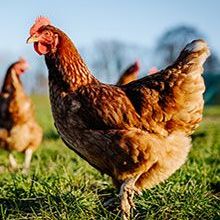More than one in five UK wild birds have parasitic infections, research finds
03 September 2021

Researchers at the University of Lincoln tested over 750 UK birds and found that 20% had at least one parasitic infection.
According to Rose Parsa, Master’s student at the University of Lincoln, researching avian parasites plays an important role in both wildlife conservation and predicting future disease outbreaks. “Host-parasite dynamics are especially important to understand for conservation of declining avian species as well as for determining the potential of zoonotic or cross-species transmission, such as to livestock, pets, and other wildlife” she said.
The researchers sampled bird faeces from seven sites in England, Wales and Ireland and tested for signs of parasitic infection. During the 15-month-long study, faecal samples were collected from 755 birds representing 38 different species – including starlings, crows and sparrows. “Parasitic infections appear to be much less common than originally thought, as only 20% (151/755) of all birds were infected,” explained Rose.
Of the birds with parasitic infections, 12.6% were infected with multiple parasite species. Corvids, starlings and dunnocks had the highest infection rates, with infection rates ranging from 49.1–100%. This could be due to a number of factors, according to Rose: “Although the parasites observed did not necessarily appear to be novel, it was interesting to find that their prevalence and abundance was affected by avian families, seasons, and geographical regions. For example, the corvids sampled had high infection rates and a diverse number of parasites, which could also be due to their diet or feeding behaviour,” she said.
Although common, parasitic infections can have a serious impact on bird health and welfare. The three most prevalent parasites identified during Rose’s study were; Syngamus, or gapeworm, which infects the upper respiratory tract of birds; Isospora, a parasitic algae; and Capillaria, also known as hairworm. “General clinical signs of these parasitic infections vary but often include anorexia, diarrhoea, dehydration, lethargy, weight loss, and potentially death,” explained Rose.
“They are all transmitted through the ingestion of helminthic eggs or protozoan oocysts. This can be indirectly through a vector, such as an earthworm, or directly through parasitic stages found in the environment, such as free-living infective larvae,” she continued.
Rose Parsa will present her findings at the Microbiology Society’s Focused Meeting Avian Infectious Diseases 2021. Her talk, titled ‘Epidemiology of coccidian and helminthic endoparasites in wild passerine populations across the British Isles’ will take place at 15:55 on 15 September 2021.
Image: iStock/Sonja Filitz.
